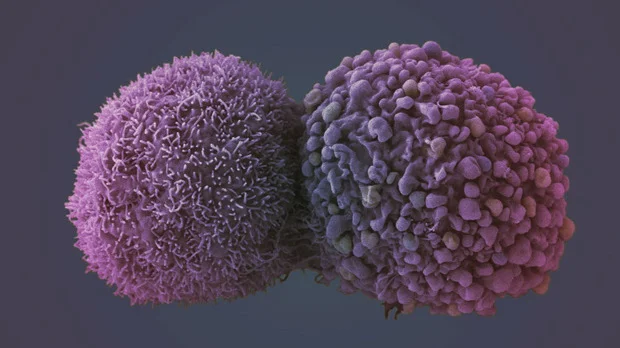Biopsy 101
A biopsy is a test that is used to help determine the composition and structure of the cells and tissues of the body. The test can be used to evaluate human tissue samples from part of the body to allow the examination of the tissue sample under a microscope. Since most biopsies are minor procedures, patients do not usually require sedation. Patients may only require local or no anesthesia. The term biopsy is of Greek origin “bios” and “opsis” where the word “biopsy” can be loosely translated to “appearance of life” or “view of the living”. Biopsy is a good way to evaluate for the presence of malignancy or for confirmation if the abnormality is benign. If there is cancer, a pathologist studies the tissue sample to determine the type and grade of malignancy.
Why is a Biopsy Performed?
A biopsy is usually performed when there are lesions that can be felt or seen on imaging such as ultrasound, X-ray, computed tomography (CT) scan, or magnetic resonance imaging (MRI) scan. The biopsy is used to help determine the nature of the suspected abnormality. In cases of suspected cancer, the biopsy helps determine if the area involved is malignant or benign. One good example is the biopsy of a breast lump for histologic examination to determine if it is cancerous. The laboratory analysis of the specimen is performed by a clinical pathologist. A definitive and correct diagnosis is usually arrived through histological and cytological examination.
When a tumor is malignant, biopsies of the lymph nodes and surrounding tissues are performed to determine if the cancer has metastasized. Biopsy also helps to determine the grade of cancer. Surgical biopsy is a procedure that removes the entire tumor and can be done with the guidance of endoscopy or imaging. The pathologist can usually tell if the cancer is a slow or aggressive form.
Types of Biopsies
There are many types of biopsies. The type of biopsy used for the patient will be determined based on several factors such as:
• Location, body part, or organ to be sampled
• Number of lesions
• How suspicious the lesion appears to be
• Characteristics such as shape and size of the lesion
• Existing comorbid and patient preference
• Facilities and systems available at the current healthcare facility
Some examples of biopsy procedures include
a) Aspiration or fine needle aspiration (FNA) biopsy
b) Cone biopsy
c) Core needle biopsy
d) Endoscopic Biopsy
e) Surface biopsy
f) Vacuum assisted biopsy
g) Punch biopsy
h) Surgical biopsy or excisional biopsy
Image Guided Biopsy
There are many biopsy procedures that are done with the help of image guidance such as CT and ultrasound. There are many breast biopsies that have been done with the guidance of stereotactic mammography. CT is increasingly used to guide the biopsy of liver and lung lesions. Interventional CT now helps to allow real time CT imaging during biopsy increasing diagnostic accuracy and shortening procedure times. Ultrasound is also useful as it offers great flexibility to follow the path of the needle to the lesion, provide real time display, and allows professionals unlimited imaging. In stereotactic mammography, it helps to show images of two angled directions to guide the needle. MRI helps provide real time images that guides the trajectory of the needle approaching the lesion. It also provides a high contrast resolution helping radiologists to differentiate between abnormalities and organ structures.
Risks of Biopsy
Although biopsy is a minimally invasive and relatively safe procedure, there are still certain risks that are involved. Some examples of risks for needle biopsy include:
• Infection of the area being biopsied
• Hematoma
• Puncture of structures near the biopsy target
• Vasovagal response
• Hemorrhage
For surgical biopsy, risks include
• Scarring due to stitches after excision
• Mortality due to risks of anesthesia
• Possibility of infection, bleeding, and delayed wound healing
• Longer recuperation necessary compared to needle biopsy
Biopsy Results
Biopsy results can be negative or positive. A negative result usually means that there are no abnormal cells seen in the examined tissue sample while a positive result means that abnormal cells are seen in the cell sample. Abnormal results help to identify:
- A possible infectious agent, changes to the cells caused by infection or disease.
- The presence of a benign growth or process.
- The presence of abnormal cells where cancer cells are seen. With these findings, the pathologist may be able to determine the origin of cancer cells to see if it is from a primary tumor or from metastasis.
Who Performs Biopsies?
Biopsies can be performed as an outpatient or inpatient bases by medical doctors or doctors of osteopathy. Surgeons are individuals who perform excisional and open biopsy. More invasive percutaneous biopsy such as the liver or lungs will be performed under guidance of medical imaging usually by a radiologist .The biopsy specimen is then analyzed by a pathologist who then renders a medical diagnosis based on the tissue sample.
References:
1) Biopsy procedure – what is a biopsy. Imaginis. Accessed 12/11/2018. http://www.imaginis.com/biopsy/biopsy
2) What is biopsy: overview, benefits, and expected results. Docdoc. Accessed 12/11/2018. https://www.docdoc.com.sg/info/procedure/biopsy/












